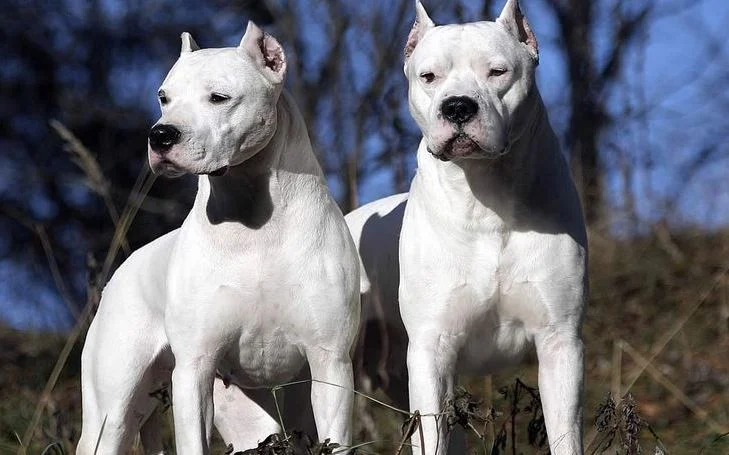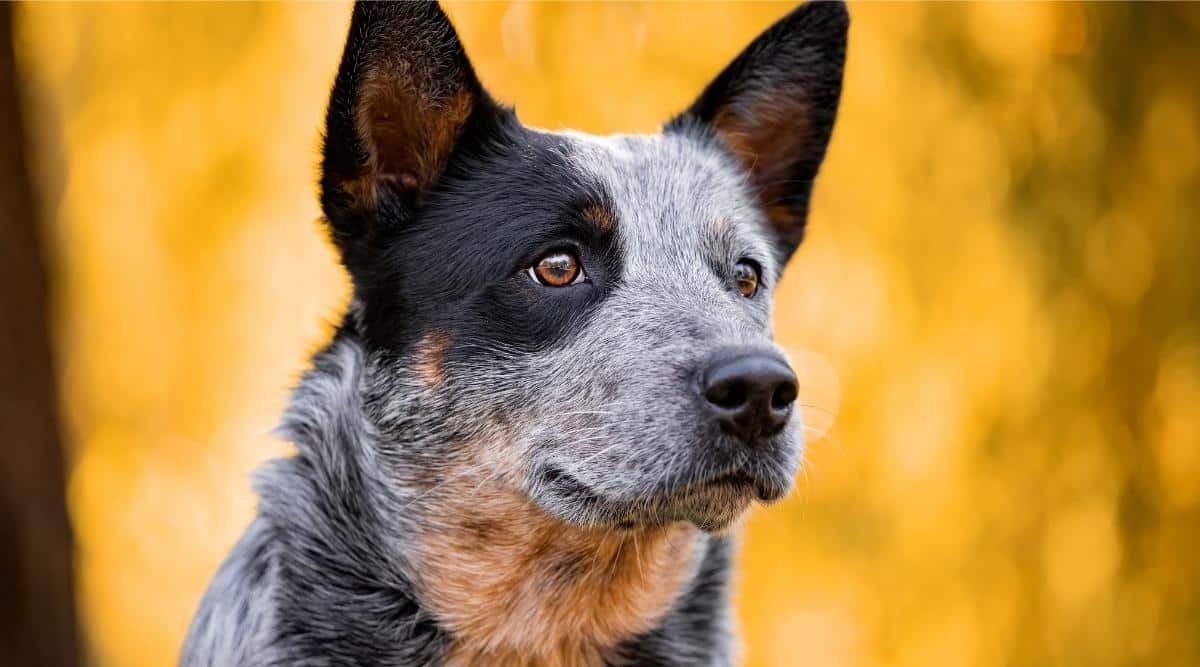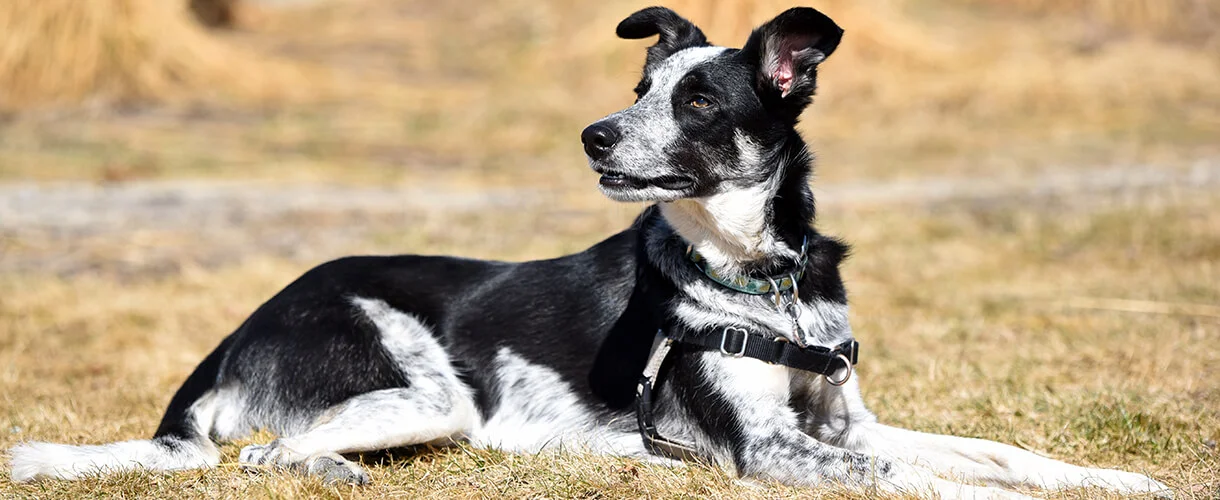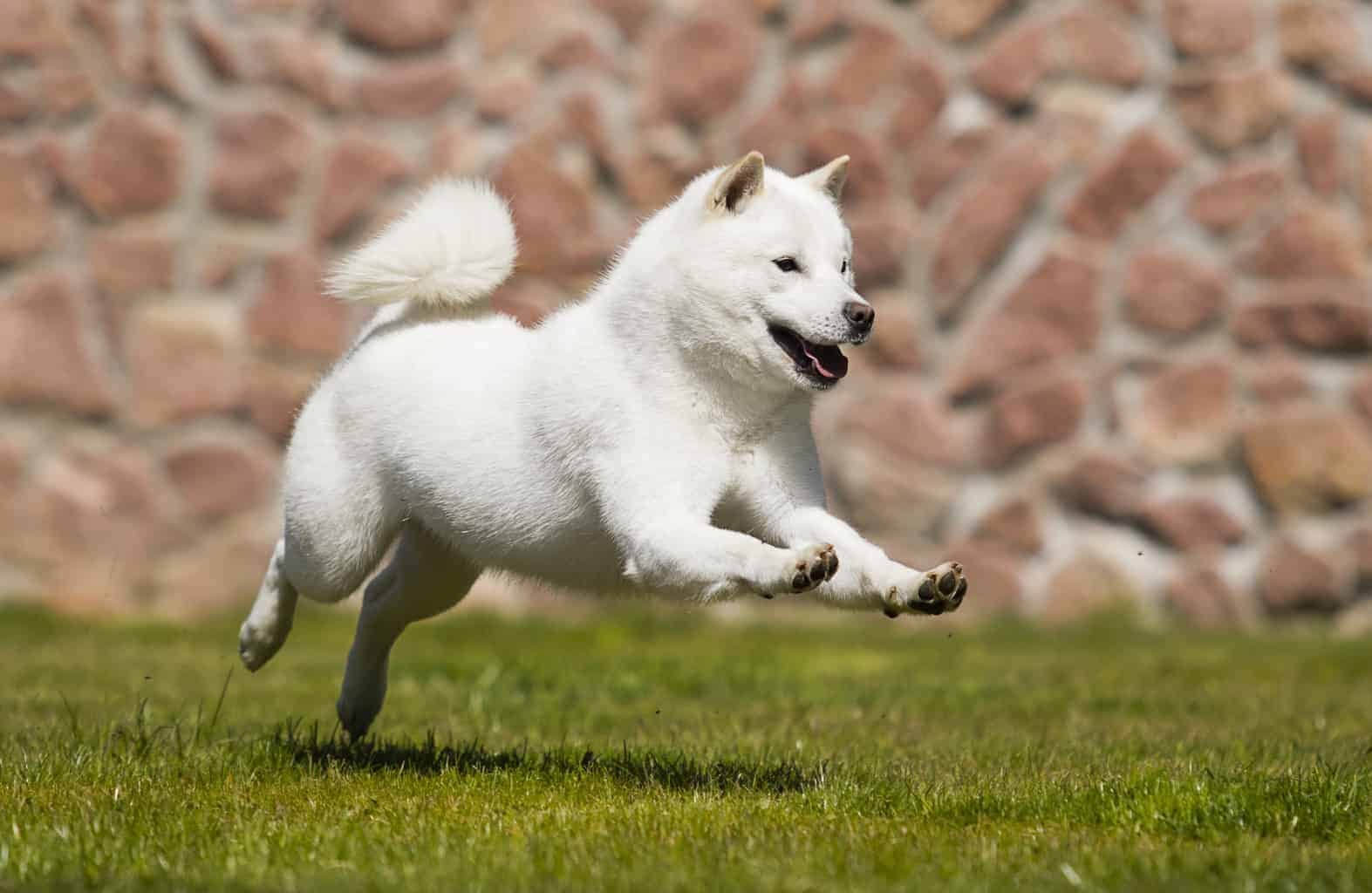Texas Heeler (Australian Cattle & Australian Shepherd Mix): Info, Pictures, Characteristics & Facts
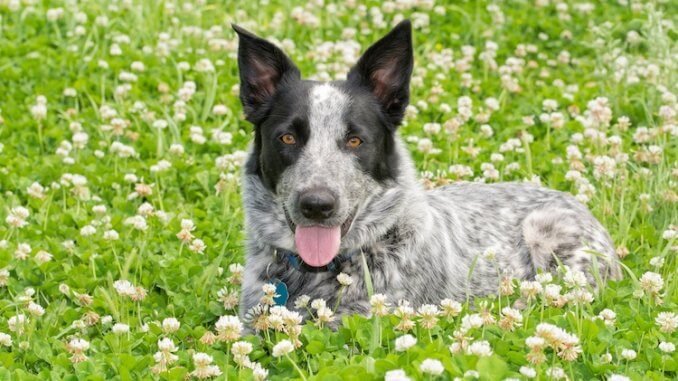
If you are considering getting a dog, it is important to understand the breed. In this blog post, we will cover what is a Texas Heeler, its history and origin, its appearance and characteristics, temperament and personality, training and exercise needs, common health problems, where to adopt or buy one, fun facts about the breed, pros and cons of getting one, and whether or not the Texas Heeler is right for you.
What is a Texas Heeler?
The Texas heeler is a dog with a unique and fascinating history. The Texas heeler is a cross between an Australian cattle dog and an Australian shepherd. They are intelligent, loyal, and high-energy dogs that make great family companions. They are sometimes referred to as the Queensland heeler or blue heeler in Australia.
It’s been said that the Texas heeler was first registered as ‘Texas heelers’ in 1973. They make good watchdogs and have an energetic and playful nature. They make great family dogs and do best in larger homes with a backyard, as they have a tendency to be destructive if given too much free reign.
They make excellent hunting dogs, but they can also be trained to perform other duties, such as herding livestock or search-and-rescue missions. They are loyal and easy to train, making them excellent candidates for beginner dog owners.
History and Origin of the Texas Heeler
The Texas heeler is a crossbreed of the Australian cattle dog and the Australian shepherd. It was initially registered as a breed with the Animal Research Foundation in May of 1970. The popularity of this herding dog is high among cattle ranchers and farmers in Texas.
The distinctive features of its parent breeds can help shed some light on the lovable companion and working dog.
A Texas heeler puppy is born with bobbed tail, which is characteristic of its parent breed, the Australian shepherd.
Another important feature is its blue-green eyes, which are indicative of its parent breed, the cattle dog. Besides, it has a medium-length coat that comes in various colors and textures.
Appearance and Characteristics of the Texas Heeler
The Texas heeler is a dog that is a mix of the Australian cattle dog and the Australian shepherd. It is known for its protective and weather-proof double coat, which can be white, grey, black, blue, blue merle, or brown. Its ears are floppy at birth but perk up and stay pointy after that. Its eyes are usually brown and some may have a bobbed tail. This dog is loyal, protective and makes great family dog. But it prefers a home with a backyard to play in.
It has a sturdy frame, but can be agile enough to jump high into the air to retrieve objects from high places. It has a gentle temperament that makes it good with children. However, this dog requires regular exercise to keep it happy and healthy.
Temperament and Personality of the Texas Heeler
The Texas heeler is an intelligent dog with a single-focused mindset. This breed excels at herding and has a single-minded focus on herding tasks. The dogs are highly trainable, but need a firm hand and consistent commands to learn new tricks.
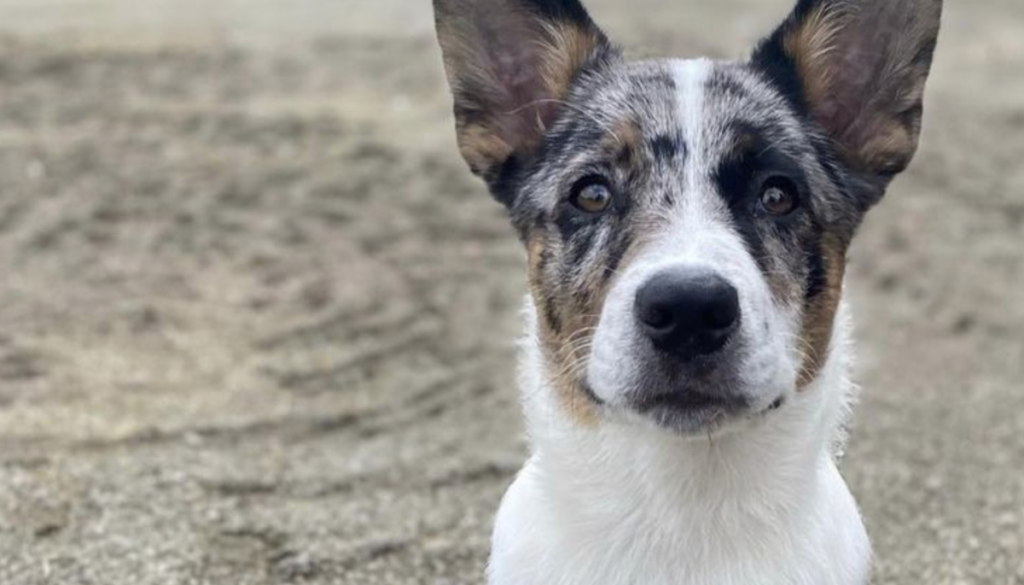
They are known to be good watchdogs and are highly loyal and protective of their family. These dogs practice herding even with small children and other pets in the home. They have an outgoing personality and love to play with other dogs. They thrive in large homes and make excellent family dogs.
Texans Heelers are known for their unique appearance, which includes a docked tail, black patches around the eyes, and a distinctive heel shape. They have a short stature of 26-28 inches and weigh between 25-40 pounds.
Training and Exercise Needs for a Texas Heeler
– Texas heelers require lots of daily exercise, such as running and cycling, as well as activities that stimulate them mentally, like hide-and-seek, fetch, or canine sports.
– Texas heelers should be walked on a leash and kept close when out and about due to their innate herding drive. Like other herding dog breeds, they are naturally inclined to be more nervous around people than other dog breeds, making them less suitable for families with small children or anyone who doesn’t have experience with herding dogs.
– A well-balanced diet that is relatively high in calories should be provided, as well as food that is tailored to their size and age, to support their active lifestyle.
– Texas heelers are suitable for sports competitions, though they should not participate at an advanced age due to the risks of hip dysplasia and arthritis.
Obesity is also a concern for texas heeler owners, so regular exercise and monitoring of weight are important for this dog’s health and longevity.
Common Health Problems in the Texas Heeler Breed
Texas Heelers are prone to several health issues, including hip dysplasia, elbow dysplasia, progressive retinal atrophy, cataracts, and distichia. These issues should be monitored regularly through regular veterinary checkups. A diet high in calories and proteins can contribute to obesity in this breed. Erectile Dysfunction and intervertebral disk disease are other health issues that can arise in Texas Heelers.
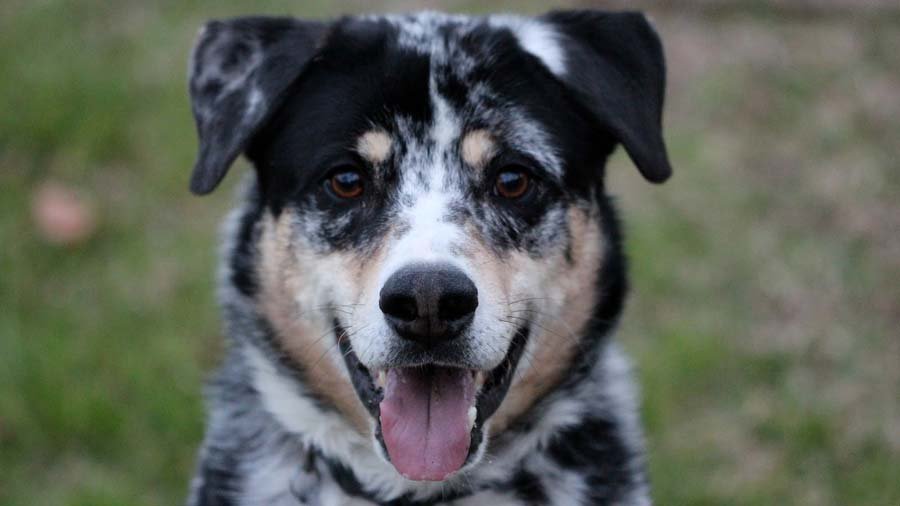
Owners should ensure their dog gets enough exercise to prevent weight gain. Additionally, Texas Heelers are known for their athleticism andintelligence, making them great family dogs and companions.
However, care must be taken to ensure that the dog receives a suitable amount of exercise to avoid obesity. Overall, the Texas heeler is an adorable dog with lots of health and fitness benefits.
Is a Texas Heeler Right for You?
Where to Adopt or Buy a Texas Heeler
The Texas heeler is a “designer breed” created by crossing an Australian cattle dog and an Australian shepherd. The breed is known for its intelligence, obedience, and herding abilities.
A reputable breeder can cost up to $1000, but you can also find them through rescue organizations for a relatively low cost. Before adopting a heeler from a rescue organization, it’s vital that potential owners consider several factors, such as age and gender. Also, they should ensure they have the time and resources to care for the dog properly. A good rule of thumb is to wait until the dog reaches adulthood before making a decision on purchasing one. This will provide the dog with ample time to adjust to its new environment and learn proper socialization skills.
Fun Facts About the Texas Heeler
The Texas heeler is a mix of the Australian cattle dog and the Australian shepherd. They are intelligent, trainable, and eager to please dogs with a protective and loyal spirit. They are also known for their high level of activity and athleticism, making them good family companions. Texas heeler puppies are born without any tail.
They have a silky coat that is black or brown in color. These dogs can weigh between 50 and 70 pounds, and they stand between 12 to 15 inches tall.
This dog’s personality can vary depending on its environment and training. They are known to be easy to train and make good agility partners due to their athleticism and intelligence. However, it is essential that they receive adequate training and daily exercise as puppies to help them develop healthy minds and bodies.
Is Texas Heeler Right For Me
If you’re interested in a dog that is content, loyal, and affectionate, then a Texas heeler might be the perfect choice for you. These dogs make great family dogs, but they typically prefer larger living spaces such as a farm or house with a backyard. So if you’re looking to adopt one, make sure to invest time in its maintenance and entertainment to help it become happy, healthy, and well- adjusted.
A male working pure red stubby tail heelers are available from breeders in Bristow, Oklahoma. They make great family dogs, but they prefer large living spaces such as a farm or house with a backyard. So if you’re looking to adopt one, make sure to invest time in its maintenance and entertainment to help it become happy, healthy, and well-adjusted.
Similar Breeds Like Texas Heeler
Texas heelers are a mix of Australian cattle dogs and Australian shepherd dogs. They are a medium-sized dog with medium-to-high energy requirements. They can come in various colors, such as black, blue, chocolate, and white.
Texas heelers are intelligent and high-energy dogs. They need active and experienced owners who can provide them with plenty of exercise and stimulation. Texas heelers are good family dogs and make excellent watchdogs. However, they require regular vet care to avoid health issues such as hip dysplasia and seizures.
Overall, Texas heelers make great family companions that have plenty of energy and personality to spare. They can be found in shelters or rescue organizations across the country.
Pros and Cons of Getting an Texas Heeler
Texas heelers are intelligent, playful, and energetic dogs that require plenty of exercise and attention. These dogs make great family companions due to their high energy level and eagerness to learn.
However, Texas heelers do need daily walks and playtime in order to stay healthy and happy. They are prone to health issues such as hip dysplasia and arthritis as they age. Due to their herding nature, owners should keep them on a leash when walking them outside as they can be prone to chasing other animals or people.
Texas heelers have an innate drive to herd, so owners should provide them with plenty of exercise and mental stimulation. Overall, these dogs make great family members due to their loving personalities and intelligence.
Frequently Asked Questions
How much does a Texas Heeler puppy cost?
The average price of a Texas Heeler puppy is between $400 and $500. However, some puppies can cost up to $1,000 or more. Rescuing a Texas Heeler from a breeder is usually much cheaper than buying from a breeder and can cost between $250 to $300. The average yearly cost of owning a Texas Heeler is $500 to $700 not including food, treats, and toys.
What 2 breeds make a Texas Heeler?
The Texas Heeler is a cross between the Australian Cattle Dog and the Australian Shepherd, and as such, their fur can be blue mottled or black. The Australian Cattle Dog is also known as a Blue Heeler or Queensland Heeler, and the Australian Shepherd is also referred to as an Aussie Sheep Heeler or Texas Cattle Dog.
The coat of a Blue Heeler can be red mottled or blue mottled, while a Texas Heeler can be black, blue, chocolate, or white. Texas Heelers are active, energetic, loyal, and intelligent dog breeds that make great family companions.
Is a Texas Heeler a good family dog?
Yes, Texas Heelers make great family pets. They are loyal to their family members and gentle around adults and children. They are alert and will let you know when someone is at the door. When considering if a Texas Heeler is the right dog for you, take into account if you have a sizable yard and plenty of time for walks and play. Texas Heelers are highly trainable, intelligent dogs, so with consistency and patience, unwanted herding behaviors can be curbed. These dogs thrive in larger homes, like a farm or house with a backyard.
How big does a Texas Heeler puppy get?
At 7 weeks old, Texas Heeler puppies weigh around 9 pounds and grow steadily until they reach their full weight range of between 45-50 pounds and are 17-22 inches tall. Fully grown Texas Heelser puppies typically weigh between 25-50 pounds, with some reaching up to 60 pounds. The size of a Texas Heeler puppy will depend on how active it is and how it is raised, but the average size is around 25-50 pounds.
What Two Breeds Make a Texas Heeler?
The Texas Heeler is a mix-breed of an Australian Shepherd and an Australian Cattle Dog that is known for its loyal, intelligent and energetic qualities. Additionally, blue heelers are sometimes called Queensland heelers, Australian cattle dog, or red heelers.
How much is a Texas Heeler Puppy?
The average price of a Texas Heeler puppy is between $400-$500, but some can cost up to $1,000 or more. Rescued Texas Heelers usually cost between $250-$300, but prices may vary depending on the breeder and the health of the puppies. Medical care, shots, veterinarian visits, and high-quality food are all common upfront costs for a Texas Heeler puppy. Male Texas Heelers weigh 45.0-50.0 lbs and female Texas Heelers weigh 45.0-50.0 lbs.
Is a Texas Heeler a good family dog?
Yes, a Texas Heeler can be a great family dog. They are intelligent, loyal, and alert dogs that make excellent guard dogs. They are also good with children and other pets, making them suitable for families with kids. In terms of exercise requirements, they need plenty of daily playtime to keep them stimulated and mentally healthy. Texas Heelers do best in homes that have plenty of space – large enough to run around and play.
What is a Texas Heeler?
A Texas Heeler is a cross between an Australian Cattle Dog and an Australian Shepherd, and they originate from Texas. They are intelligent, hard-working, and energetic, and make great family pets. They require plenty of stimulation and play to stay content, so a lot of their time should be spent outdoors playing fetch or other activities.
Do you have the ideal home for a Texas Heeler dog?
Yes, a Texas Heeler dog is indeed the perfect breed for an experienced dog owner. They are often recommended to families with children and other pets, as they require routine training, socialization, exercise, and mental stimulation to stay happy and healthy.
Heeler puppies need spacious yards where they can run and play safely, preferably with a dog fence that is large enough to accommodate their size. Furthermore, Texas Heelers do well in homes that are large and have a backyard – this allows them to run and play without having to worry about other animals or children getting into their yard.
How much does a Texas Heeler shed?
A Texas Heeler sheds a moderate amount of hair, which should be brushed once per week. A grooming glove is a great tool for brushing this dog’s coat. Regular vet visits are recommended for Texas Heelers. Adequate time for exercise and grooming is essential for a Texas Heeler.
Is the Texas Heeler the perfect mix for you?
The Texas Heeler is a dog breed that requires plenty of exercise each day. This means that if you’re looking for a dog that won’t require much effort from your part, this might not be the right breed for you. In addition, be aware that this dog breed is not the best fit for those who cannot provide the necessary exercise and playtime.
If you have an active lifestyle and a sizable yard, the Texas Heeler might be a good choice for you. However, keep in mind that this breed can be difficult to train and requires authority from the start. Additionally, consult a veterinarian for diet recommendations as there is variation among individual dogs.
What Are Some Common Health Problems for the Texas Heeler?
Some common health problems for the Texas Heeler include hip dysplasia, eye anomalies, and distichia. These health issues can be detected through regular veterinary checkups and can be treated with surgery, medication, or laser therapy if necessary. Texas Heelers also tend to be healthy dogs, but may be prone to some other health issues, such as obesity, high energy levels, and hip dysplasia.
Are Texas Heelers hard to train?
Yes, Texas Heelers can be quite difficult to train due to their intelligence and strong work ethic. However, with the right training and enough exercise and mental stimulation, they can be trained to do tasks like pulling a cart, herding cattle, or patrolling property.
It is important to start training early with Texas Heelers as they may run into issues with hip dysplasia and arthritis as they age. Proper socialization is also important for Texas Heelers, as they can be territorial and suspicious of strangers.
What are the benefits of having a Texas heeler puppy?
When it comes to family pets, Texas heeler puppies are definitely a great option. They’re intelligent, hard-working, and require a lot of exercise and mental stimulation. Texas heeler puppies also have strong herding instincts and can make loyal companions. Moreover, they are easily trainable and can get destructive if left alone too long.
However, just like any other dog breed, there are some things to keep in mind when owning a Texas heeler puppy. For example, they need plenty of room to run and play; therefore, a large yard is ideal. And last but not least, please remember that puppies born with blue eyes will sometimes develop cataracts later in life. If you’re concerned about your pup’s health, consult a veterinarian right away.
How much does it cost to get a Texas heeler puppy?
The average cost of a Texas heeler puppy is between $400 – $500. However, this price can vary depending on the breeder, line, and condition of the puppy. It’s also important to remember that puppies from backyard breeders or those attempting to sell puppies for much more or much less than they’re worth are not recommended. Instead, look for breeders who are registered with the AKC or ASCPA and have a good reputation online.
Is there a difference between adult and baby Texas heelers?
There is no definitive answer to this question as the size, weight and specific traits of Texas Heeler puppies will differ depending on the breeder. However, in general, the Texas Heeler is a medium-sized dog that grows to a height of 22 inches and can weigh up to 50 pounds when fully grown. At 7 weeks old, puppies weigh about 9 pounds. At 11 to 12 months old, they are considered fully grown and typically have a life expectancy of 10 to 12 years. The Mini Texas Heeler (created by breeding a Border Collie or Mini Australian Cattle Dog with an Australian Shepherd) is a smaller dog that only grows up to 40 pounds as an adult.
Which one is better: male or female Texas heelers?
There isn’t a definitive answer to this question as it largely depends on what you’re looking for.
Generally, male and female Texas Heelers are generally similar in size and build, with female Texas Heelers typically being slightly smaller than males. Blue Heeler-like appearances may be more common with male Texas Heelers, while female Texas Heelers may appear more like a traditional heeler breed.
Texas Heelers come in a variety of colors, such as black, blue, chocolate, or white. Mini, Standard, and Labraheeler are the three types of Texas Heeler and Texas Heeler mixes.
Where can I find a good breeder of texas heeler puppies?
When looking for a breeder of texas heeler puppies, you can locate reputable breeders by doing some online research. Make sure to ask breeders questions about their dogs and their puppies so that you can be confident in your decision to adopt or purchase one.
When you’re ready to buy a Texas Heeler, expect to pay anywhere from $500 to $1000 for a purebred puppy. Prices may vary depending on the breeder’s location and whether they have any puppies available for adoption or sale.
How much exercise should my dog get while they’re growing up, and how often should they go for walks?
Puppies should be walked an average of 14 miles per week.
The best time for puppies to start their exercise routine is when they’re puppies and during their early developmental stages. That means puppies should be walked an average of 14 miles per week. This will help them in developing healthy muscles, bones, and nervous system.
In addition, make sure your dog gets two to three good, half-hour- to hour-long walks per day. This will help in keeping their weight under control, improve their socialization skills, and keep them mentally stimulated.
Additionally, doesn’t forget to include learning tricks and training sessions into their exercise time. Doing so can work on their cognitive abilities. Plus, taking your puppy to a dog park can help improve their early socialization skills!
Just like people, dogs should be seen at least once a year for routine checkups until they are the age of seven. This will help ensure that they’re healthy and having proper health screenings performed on them.
How long will it take me to be able to start training my dog?
It will take you about 30 minutes to 1 hour of physical exercise per day to successfully train your dog. This can be done through dog park visits, working on early socialization exercises with your pup, incorporating learning tricks and training sessions into the dog’s exercise time, and planning an activity of some sort every day.
A healthy diet is also essential for training and health of your dog. Make sure to feed your dog a high-quality diet that contains sufficient protein, carbohydrates, and essential vitamins and minerals. Also, keep in mind to regularly visit the veterinarian to ensure your pup’s health is being monitored and maintained.
What should I look for when buying a Texas heeler puppy?
When you’re looking to buy a Texas heeler puppy, here are some important factors to keep in mind.
1. Make sure you have enough financial resources to cover vet bills and other expenses down the road.
2. Consider if you have enough time for your puppy to play and run around in a large, fenced-in yard.
3. Find a breeder who is reputable and has healthy puppies for sale. You can do this by checking out their health and vaccination records as well as their breeding practices.
4. If you’d like to reserve a puppy before they’re all sold out, try a first-come, first-serve model.
Is there anything I need to know before deciding whether or not to buy a Texas heeler puppy?
Before making the decision to buy a Texas heeler puppy, it is important to have a suitable environment in which to raise them. This means having a large yard and plenty of time for walks and play. Additionally, you will want to ask your breeder questions about their experience, what health tests they have done on puppies, and whether or not they have any references from other buyers.
It is also important to research the breeder you are considering before making the purchase. Look for reputable breeders with positive reviews who have answered all of your questions. Finally, be sure to consult with your veterinarian about what specific diet and health recommendations are necessary for your particular Texas heeler puppy.
How much does it cost to raise a Texas heeler puppy?
Raising a Texas heeler puppy can cost anywhere from $400 to $500, with the average bill coming in at around $500. However, puppies who come from breeder parents may cost much more, ranging from $1,000 to $2,000 or more.
You’ll also need to budget for basic yearly costs of owning a Texas heeler, which can range from $500 to $700. This includes vet care, food, treats, and toys.
Adopting a Texas heeler from a rescue is typically much cheaper than adopting one from a breeder. This way you can save anywhere from $250 to $300 on the upfront costs of buying a pup.
Conclusion
Texas heeler puppies are energetic and active. They are intelligent and can learn new things quickly. They’re eager to please and love to be entertained. Texas heeler puppies can be trained to do many tricks, such as sit, come, and heel.
If you’re looking for a dog that can help with your farm chores and give you years of companionship, the Texas heeler may be right for you! It’s always best to adopt from a breeder or a dog shelter, especially if you have young children. However, if you don’t have the time nor resources to look for a breeder or want an adult dog, buying a dog from a breeder is the next best thing. Know your breed and research it before getting one! Out with it now?
